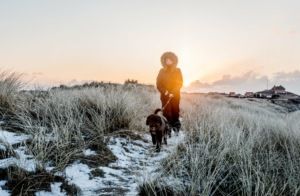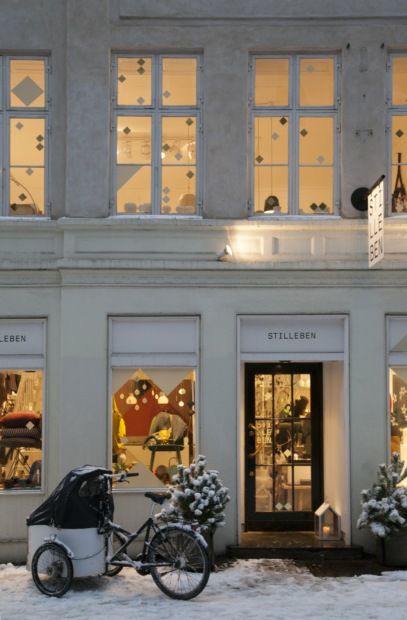Things to do
Hibernation or migration? Finding salvation in the Danish winter
This article is more than 4 years old.
The ultimate survival guide for enduring through to the spring

(photo: visit copenhagen/ mette johnsen)
If you’re reading this, you poor soul, then it’s because you’ve wound up by the slings and arrows of outrageous fortune in the northern hemisphere during the winter.
Some people seem to traverse the coldest season with the kind of dazzling optimism that makes you want to smash a biscuit tin over their heads.
So how do they do it? Well, it’s easy.
Is it SAD or am I just sad?
Living in the northern climes you’ve surely heard of Seasonal Afflictive Disorder (SAD). As you can surmise from the acronym, it’s a type of depression caused by the onset of winter that makes you feel sad in capital letters.
Symptoms include lethargy and low mood, but the jury is still out on why some people develop SAD and others don’t. Around 8 percent of the Scandinavian population experience the ‘Winter Blues’ and it’s more prevalent among women than men.
Studies have shown that the brain’s production of mood-regulating neurotransmitters, such as serotonin, relates directly to sunlight exposure. While Denmark is blessed with 17 hours of daylight in the summer, in the winter you’ll be lucky to see seven.
Not only that, but your vitamin D levels take a beating in the winter. Vitamin D aids your immune system, nervous system, muscles and calcium absorption.
Supplement your soul
It’s wise, therefore, to give your body an artificial boost. Thanks to modern tech, light therapy lamps are now affordable, portable and widely available.
Yes, they seem a little creepy, but nobody has to see you gazing blankly into its luminous depths like a cave-dwelling reptile – you can just absorb its power in private and spend the rest of the day fully charged and absurdly blithe.
Plus, as per government advice for the entire northern hemisphere, Danes pop vitamin D tablets like candy, or more accurately, they eat candy like it’s Vitamin D.
Combined, a lamp and a supplement won’t rival a hot Friday afternoon of sun-worshipping at Krøyers Plads, but it has the semblance of self-care and might lift your spirits. When you’re facing four months of darkness, a little means a lot.
Nature Lesson 1: Hibernation
When you’re on your second espresso, psyching yourself up to turn off the light therapy lamp and set forth on a dark, wet and joyless morning commute, it can be healthy to remember that life finds a way.
Bears, for example, survive Arctic conditions by making a den and going into a torpor. By all means, go into a torpor yourself, but it probably won’t look good in front of your colleagues.
More socially acceptable is to make yourself a den – which means embracing the flogged-to-death-by-tourist-guides concept of Danish ‘hygge’.
What hygge boils down to is choosing the people you’re going to hunker down with for the winter: the kind of crew you wouldn’t mind being sealed in an air-raid shelter with, together with only canned foods and Monopoly.
Find those people and keep them close. Establish a schedule of casual socialising to combat the fearsome isolation of the ping-pong, work-home routine. While you’re at it, make your home ‘hyggeligt’ to support a positive mindset: decorate, play music, clean up, cook good food.
Mental framing may be your best weapon. A 2020 study by health psychologist Kari Leibowitz of attitudes towards winter amongst residents of Tromsø, Norway – which sees only three hours of daylight during winter – found that the more they perceived winter as an opportunity to enjoy the climate, the higher their levels of life satisfaction and overall mental health.
Nature Lesson 2: Warmth
Here’s what bears do: they gorge themselves to form a thick layer of fat before they turn in for winter.
Whatever happens over winter, there will almost certainly be some gorging. Brace yourself for cheese fondue, pork, duck, gravy and an avalanche of potatoes-every-way.
Danes are feeders and ‘tis the season when bottlenecks of decadent julefrokosts, reunion drinks, buffets and family parties will hijack your weekends. Every shop will adopt the ceremonial bowl of pebernødder (cardamom biscuits) and some staff may even accost you with a thimble of gløgg on entry.
So the layer of fat is a given. But you should still supplement nature’s jacket with a high-quality winter coat. Puffer if possible, fur-lined if you want, but hooded is a must.
Also crucial are long-johns, as is ensuring a secure connection between sock and longjohn. Essentially, if you were to strip a Dane in winter, you would find a thermal layer forming a perfect seal from neck to toe, like a ham in a sous-vide machine.
Nature Lesson 3: Migration
In Tønder, southern Denmark, a familiar harbinger of winter is the sight of the so-called ‘sort sol’ (black sun) – migrating starlings in flocks of up to 1 million birds. The tiny holiday-seekers fly south for winter, where they book up whole blocks of cheap, full-board hotel complexes on the Alicante coast.
It’s probably cheating to advise a winter break as a coping mechanism, but it’s one many northerners adopt. According to Danmark Statistik, every year 380,000 Danes go on a winter holiday – half to sun and sea and the other half to snow and ski.
What they’re all seeking is extremes. Danish winter is cold and dark, but there are no snow-swaddled mountains, no gloomy lakes under a layer of ice as thick as a seven eleven, no polar night, aurora borealis or bloodthirsty carnivores roaming the villages.
Denmark is a flat, bland vista of squat cities, towns and farmland, frequently bulldozed by fog and cloud, and never scorching nor glacial. If you can snag a cheap flight for some cheap thrills this winter, don’t say no.
Winter my ride
If you’re staying put, then take this alternative nugget of migratory advice: pimp your vehicle for winter.
Put your car under a tarp or in a garage. Get a set of winter tyres. Get a squeegee, an ice scraper, and a thermal flask that actually fits your cup-holder.
If you’re biking, switch your tyres: if you’re still flying around on skinny 25mm racer tyres you’ll thank yourself for upgrading to at least a 28mm, but a beefy pair of 30+mms with hefty tread is life changing.
Have mudguards, bike gloves, responsive brakes, a balaclava with slits for eye holes so you can barrel down the road in sub-zero temperatures without friction-burning the skin off your face in the frozen air. Warm water works on a frozen lock and WD40 is your best friend.
Lonesome this Christmas?
The elephant in the room is Christmas. It deserves its own survival guide. It’s both a welcome oasis of promised relaxation and a life-upending barrage of obligations.
Nevertheless, the prospect of a solo-Christmas is less gloomy than in last year’s brutal lockdown. Many of us were and will be alone for the holidays. If your family is abroad and you’re scrabbling for company, here are some tips.
Let go of your expectations. This isn’t as depressing as it sounds. Growing up, we’re spoon-fed an ideal of what Christmas should be by our families, half-remembered traditions and the media.
You don’t need huge glittering bows on a monstrous fir tree and a stack of gifts up to your elbows. Traversing airports and motorways, corona tests and living out of a suitcase just to appease the notion of ‘togetherness over Christmas’ is stressful. Admit it!
Once you free yourself psychologically from what you should be doing and who should be there, you will feel far more present and satisfied. Set your own tone and define your own enjoyment.
If you want to seek company in your local community there are communal dining arrangements, usually in support of charities, around the city. Search for ‘fællesspisning’ to find events near you.
Most Danes spend New Years’ Eve at home. If someone invites you to their home on the 31st , just say yes. Everyone’s looking for the perfect party and if you’re too picky you’ll end up with nothing.
Clothes off in the cold
So far, surviving winter has been largely about avoidance. But the opposite strategy – embracing the cold – is frequently heralded as the healthiest approach.
Winter bathing is a national sport in Denmark. A dunk in ice water improves circulation, burns fat, betters your immune response, releases endorphins and reduces stress. It’s an age-old secret to longevity championed in Scandinavia and well worth taking part in.
A word of warning: do not jump in. Cold water shock is real and dangerous. Keep moving in the water to aid acclimatisation, and warm up slowly afterwards. A general rule is to spend one minute for every temperature degree of the water.
Clothes off in the heat
On the flipside, saunas are another proven vitality booster during winter. They purport to offer many of the same cardiovascular benefits as cold water swimming and are also thought to benefit asthma sufferers and those with irritated skin. Plus it’s just nice to be warm.
Get outside without taking your clothes off by ice-skating, winter hiking in woodlands around the city, foraging for Christmas decorations or the last of autumn’s edible mushrooms. Take in the city lights and festive markets if you’re an urbanite – but for god’s sake go outside.
Whatever your approach to winter, a blanket survival tip is to put the effort in. No pain no gain. When energy reserves are low, you’ll be grateful for preparation and forethought. In the season of giving, you get what you give.
Check out CPH Post’s entire 2021 Relocation Winter Guide here.











































